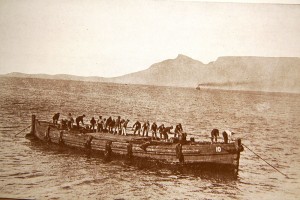“The internet of things” — a rather unimaginative way to describe something vast. What did Kevin Ashton mean when he used the phrase for the first time in 1995?
What is it?
The Internet of Things (IoT) refers to connected devices communicating with each another and using machine-to-machine (M2M) communication via virtual, mobile or instantaneous connections.
This network of physical objects is embedded with electronics, software, sensors, and network connectivity, enabling the objects to collect and exchange data.
They can include any object fitted with the right technology and the ability to connect to the internet. For example, home appliances, most forms of transport, shops and machines used for manufacturing, farming, healthcare, etc. Existing M2M applications include smart metering, patient monitoring, CCTV surveillance, vehicle tracking, secure ATMs and digital signage.
 What can it be used for?
What can it be used for?http://www.digitalistmag.com; http://searchdatacenter.techtarget.com;
http://searchbusinessanalytics.techtarget.com; http://www.theguardian.com]


